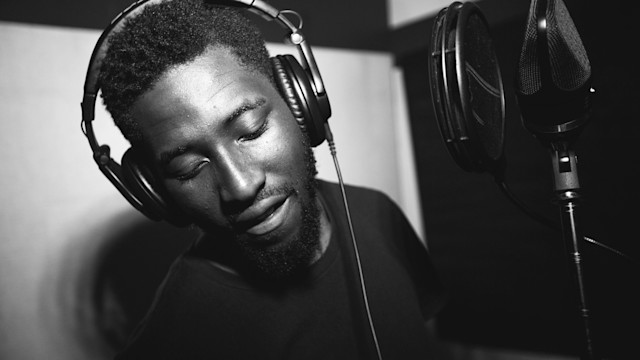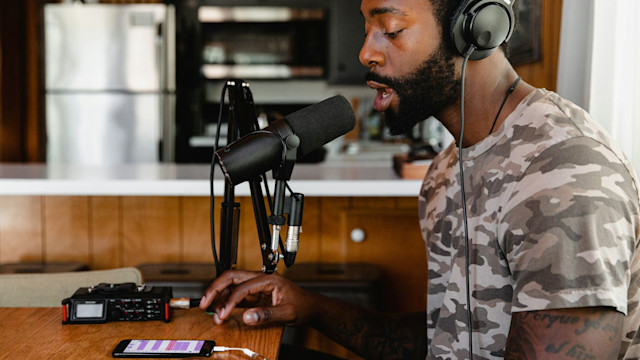What is Vocal Production? A Producer’s guide to Vocal Production in Music
October 17, 2024 - Vocal Production is more than just recording an artist singing. The vocals are usually the centerpiece of any track, and they can often make or break a track.

You’ve heard the term, but you’re still no closer to understanding the intricacies of vocal production in music. Producing vocals and getting the right vocal performance from an artist is often one of the most interesting parts of being a producer or engineer. Whilst a lot more aspects of music production can be done in isolation, bridging the gap between the audience and the artist is an important collaboration. Badly done vocals can ruin a song, especially if it has commercial aspirations.
Don’t worry if you’re the artist who is singing- with enough self-awareness the soft skills surrounding vocal production can be applied to how you produce your vocals. This guide will touch on effects like compression and EQ, soft skills, and establishing a relationship with the artist you’re working with, even if that’s yourself!
Getting Started
Pre Production
Quite often, the artist will be laying the vocals down as the very last piece of the song (barring a few tweaks and small additions). It can happen that vocals come first, but to get the energy of the song aligned with the vocal performance, artists will want to hear the full song in their headphones.
Artists will need to hear all of the different dynamic parts of the song to know when to push their performance, how loud to sing, and how to deliver their lyrics. If they are just singing along to a lone piano track, it will be harder to get a good performance. Check in with your artist and establish if the instrumental track is finished, and when they want to lay down vocals. If your track is mostly done, and the artist agrees, leave vocals until last.
Establishing Goals
One of the main things producers do with vocalists during a vocal production session is to discuss the meaning of the song. Ask the vocalist what the song is about, what they are hoping to achieve in the performance, which bits are more difficult, and generally embark on a fact finding mission regarding the lyrics and song. The artist will feel more comfortable with you as a producer if they know they are being listened to.
There is a difference between an engineer and a producer, and during vocal production, a producer is just as essential as an engineer. An engineer’s goal is to record sound, a producer’s goal is to get the best out of the artist. If an artist doesn’t have a producer as part of their team, you’ll have to wear that hat in order to get the best take possible.
In The Studio
Etiquette
Vocals are normally the most vulnerable and intimate parts of any track. They are the artist baring their soul to an audience, and there needs to be a respect for that when recording in the studio. Here’s a few tips regarding studio etiquette when it comes to vocal production, and music production in general:
Get off the phone: Talk to the artist, make them feel comfortable. They (or the label, their manager etc.) don’t want their time or money wasted on an engineer who is too nervous to speak with them. It’s a massive red flag when a producer or studio engineer is on their phone all the time, and it comes across as unprofessional.
Make drinks: When recording vocals, hot water and lemon is really good for the vocal cords and helps keep them nimble for reaching those high notes. Offer the artist a drink, or if it’s you singing, indulge in some self-care.
No pictures: This could be tacked onto the no phones rule, but often artists will be recording secretly, and have a full marketing plan in which to announce the release of their track. If you take pictures of everything and put it on your social media, you could ruin their marketing plans. Treat the artists like colleagues and on an equal level to you. You’ll earn their respect and maintain professionalism throughout.
Setting Up
Setting everything up for the perfect vocal ‘take’ (one recording of a live instrument) can take a while, and artists are busy people! Studio time is also expensive, and if you’re operating at an hourly rate then time needs to be spent wisely. Here are a few tips to keep things efficient:
Microphone: Recording in a bedroom in a noisy house? Maybe you need a shotgun microphone. Large room in a quiet house, maybe a dynamic microphone is best. Make sure you have the right microphone for your environment ready to go and set up.
Wiring: Cables all over the floor can get messy and be a trip hazard- when you plug everything in, make sure the artist can’t trip over any XLR cables kicking around!
The Performer: Is the artist disabled, older, or low on energy? Have a comfortable chair or sofa readily available for them to sit on. Some artists like delivering their vocals sitting down too, so a comfortable chair for your performer is pretty essential.
Software ready: Make sure your vocal tracks are loaded up and ready to go- all testing to make sure the signal is coming through should be done before your artist steps up to the mic.

The Recording Process
Guidance
Often producers will find themselves working with artists who haven’t done any kind of recording or vocal production before. It’s really important to act as a mentor in these situations- here’s a few things to consider:
Technical Advice: If your artist is concerned about vocals sounding thin, make them aware that it is common for vocals to be double tracked, processed, and put through many different plugins. You should guide them and help them deliver a performance that will complement these production techniques, and try to help them understand the production process better.
Bring out the best: Sometimes an artist will be having a bad day, and they will be struggling to perform at their best. If they want to stay and continue, it’s your job as a producer to try and elevate the performance by asking for different energy levels during vocal takes, identifying key points of emotion within the track, and asking them to match them.
Soft Skills
Soft skills are what separate good producers from great producers. Being able to get the best out of an artist will keep them coming back to work with you again:
Use the right language: When I’ve recorded artists singing in the studio, they have sometimes been in a vocal booth and I’ve been able to communicate with them through a microphone on the mixing desk. If they haven’t delivered a great take, I find it’s best to say “great take, this was good, but this could be better, let’s go again.” Positive feedback will only boost a singer’s confidence and result in a better performance.
Know your performer: Similarly, some people I’ve worked with like being told directly when something they have recorded doesn’t sound good. Some performers need regular vape breaks, or like recording at night. Ultimately you have to know your artist well enough to make them feel comfortable, and having emotional intuition will get you a long way.
The Technical Side
Vocal Effects
Vocal production relies heavily on effects, software, and programming in order to sound top-tier. Here’s a few things which you’ll come across when starting out mixing and producing vocals:
EQ: Equalization is the balancing of different frequencies in a mix, and giving each instrument its own space along the frequency spectrum. Vocals often sit quite high in a mix.
Compression - If you compress your vocals, the loud parts will get quieter, and the softer parts get louder, giving a consistency to the vocal performance.
De-Esser: These get rid of sibilance and other unwanted noises.
Saturation: If you need to bring out certain harmonics and frequencies in a performance to make them sound thicker, saturation is your best bet.
Delay, Reverb: Space effects will give your vocals room and give them life, and sometimes even glue the whole performance together. See this article on Delay in vocal production for more details.
Recording Techniques
When it comes to recording the vocals themselves and making the most out of your session, it can help to bear a few techniques in mind:
Quiet vocalist: If an artist delivers their vocals quietly, it’s best to have them closer to the microphone so their vocal information can be heard and recorded properly. If they are too far away, you’ll hear too much reverb from the room they are in, and this needs to be avoided.
Double tracking: Double tracking is one of the most widely used recording techniques in vocal production. It’s when you record two takes of the same vocal performance which are similar in energy. This makes the vocals sound thicker, wider, and more modern.
Keep it steady: Sometimes artists can get lost in the music and move around a lot when they are delivering their vocals. This needs to be monitored so that there is a consistent loudness of the vocals throughout the song. If an artist moves too much, the vocal take can end up being unusable in worst case scenarios.
Conclusion
So there you have it! A comprehensive guide on vocal production in music, your role as a producer, engineer, and performer all rolled into one. The key thing to remember when working with an artist recording vocals is to make them feel comfortable. Vocals can be really hard to get right, and can be dependent on the mood of an artist. Get the vibe right, and the rest will follow!
About the author
Max McLellan is a composer, songwriter, and audio engineer with credits ranging across film, TV and radio. He provides composition, mixing, and mastering services through his company MKM Audio.
Kom igång med Soundtrap idag!